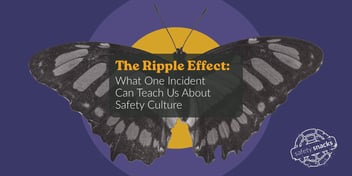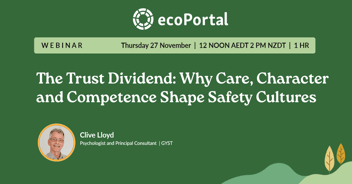It was just a line in a webinar, but it landed like a stone in still water: “You have to look after the people who look after your people”.
Lisa White from Bank of New Zealand was talking about vicarious trauma in the context of customer aggression. The kind that front-facing teams endure when tensions run high. But what struck me was the ripple effect it described. How a single moment of stress, confrontation, or crisis doesn’t stop at the person directly involved. It spreads through the whole team.
That idea took root in my mind. Could one incident in a low-risk environment send the same ripples through a team?
I believe the answer is yes.
The Culture Shift After One Incident
I heard recently about a workplace, not unlike ours, where a team member experienced a sudden health scare. It was handled calmly, professionally, and without lasting harm. But what stayed with me wasn’t the incident itself, it was what happened after.
The next day, the atmosphere shifted. People began moving a little more carefully. It wasn’t panic, it was awareness.
And then a question surfaced: Were we prepared?
That one event had quietly unsettled the team’s sense of ease. It was a crack in the assumption that “everything here is fine,” and it subtly reshaped the workplace culture.
Safety Beyond the Physical
There’s a term I keep coming back to: vicarious trauma. We usually hear it in the context of healthcare or social work, fields where people regularly witness suffering and absorb the emotional weight of others’ experiences.
While that term may not strictly apply to low-risk workplaces, the feeling it describes can still resonate.
Think of a sudden fall, a distressing phone call, or a colleague having a personal crisis. Even when we’re not directly involved, these moments can shake the emotional tone of a team.
This is where safety culture matters. Not just to prevent harm, but to help people process the unexpected and reconnect with a sense of stability when things feel off-kilter.
It’s easy, in a low-risk environment, to become a little lax. To assume that safety belongs in a manual somewhere, or with someone else. But every minor shortcut and unspoken concern is a thread being pulled in the fabric of workplace safety.
Eventually, something gives. And when it does, it’s not just about injury, it’s about impact. On confidence, morale, or how safe people feel, which is just as important as how safe they are.
Reflection
We can’t afford to let go of our vigilance, even when the risks seem small. Because safety isn’t a checklist, it’s a culture. One that’s built quietly, every day, through care, conversation, and the courage to speak up before something goes wrong. In any workplace, no matter how “low risk,” that culture is what helps us absorb the ripples and keep moving forward together.
This short and snappy read is part of our Safety Snacks© series, made for busy safety pros who like their insights one bite at a time.








